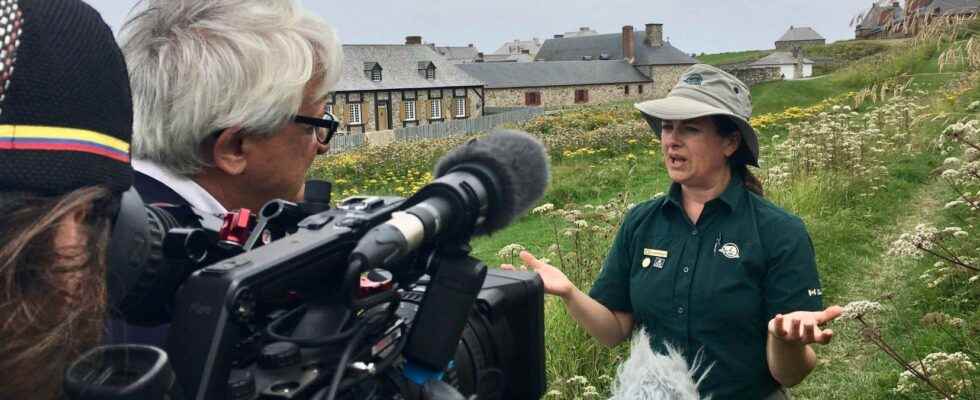This text is part of the special section Les prix de l’Acfas
It was by returning to his Pyrenean origins during his master’s studies at the University of Pau, in the south-west of France, that Laurier Turgeon laid the groundwork for a busy career, during which he experimented with various to communicate knowledge in order to share it with as many people as possible.
If the one who is now a professor of history and ethnology at Laval University wins the Acfas André-Laurendeau Prize for the humanities, letters and arts, it is first of all because he wanted to follow the Basque fishermen to complete a master’s degree on the Basques of Louisbourg, then a doctorate on Basque fishermen in the North Atlantic.
He then made two great discoveries. First that the Basques were not content to fish cod and hunt whales. Throughout the sixteenthe century, they engaged in an important trade with the Aboriginal peoples in the estuary of the St. Lawrence River and as far as the Chesapeake Bay, in Virginia.
“It was the first major trade between Europeans and Aboriginals, long before Champlain and Cartier,” he says. As early as 1560, in fact, they had organized the fur trade. »
His second discovery completes the first: the Bordeaux archives contain 6,000 documents that have never been read, especially notarial deeds. However, in America, almost all the archaeological excavations of Aboriginal sites from this period, as far as Ontario and the depths of New York State, contain goods of Basque origin — cauldrons, knives, axes, glassware.
“By making the link with these historical documents, the archaeologists were able to precisely date certain sites and locate the exact origin of certain artefacts. At the excavations of Île aux Basques [en face de Trois-Pistoles]we could even identify people by name,” explains the researcher who summed up this work in A History of New France. French and Native Americans in the 16the century [Belin]which sold over 3,000 copies in its first year, a rare publishing success in the academic world.
The art of communicating
Being also an ethnologist, Laurier Turgeon is also interested in the social construction of heritage in intercultural contexts and in its enhancement. “My participation in the exhibition on the excavations of Île aux Basques led me to wonder how heritage is used in communication and popularisation. »
In 2005, he created the Ethnological and Multimedia Investigation Laboratory (LEEM), which is particularly interested in intangible heritage. Thanks to the video, the team makes recordings of the making of pottery, rackets, musical instruments, church organists, with interviews and demonstrations. We also capture festive meals, Italian weddings, Portuguese parties. In 2012, he set up, with the Musée de la civilisation, an online exhibition, Manger ensemble!, which was so successful that it was shown in theaters for five months in 2016.
LEEM won several awards for its Discover Quebec app, created in 2012, which grafted oral stories to more than 140 sites in Old Quebec. “With the Huron-Wendat Museum, we are currently experimenting with augmented reality to project images and video into glasses and thus enrich the visit,” explains the 68-year-old researcher, who is passionate about contact between computer scientists, heritage people and the public. “It is important to democratize knowledge. »
This special content was produced by the Special Publications team of the To have to, pertaining to marketing. The drafting of To have to did not take part.
